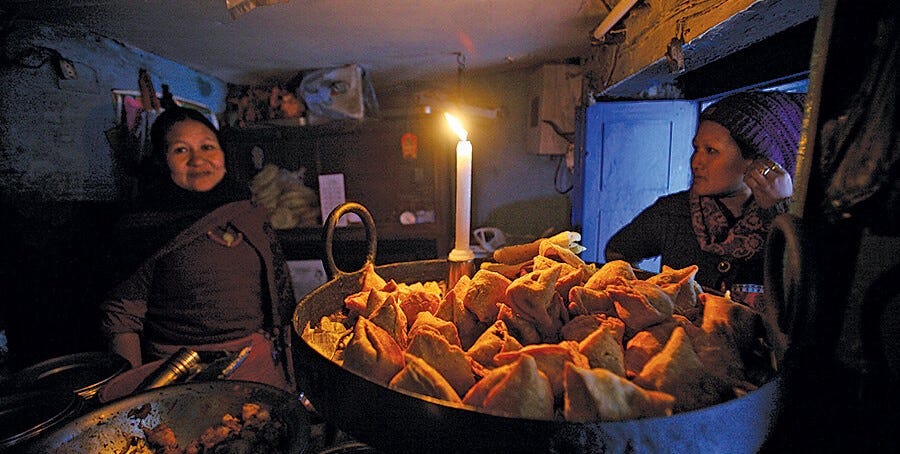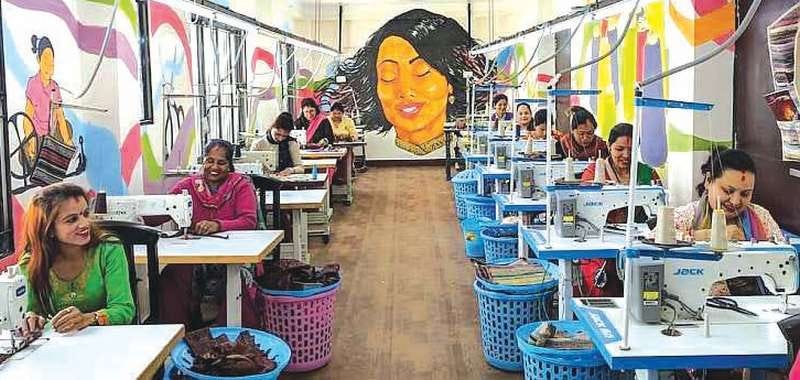Small Things Beautiful: On Building Capabilities of Nepali SMEs
SMEs are said to be the unsung heroes of every thriving economy. These small and medium enterprises, often hidden behind the shadow of larger conglomerates, bring unparalleled value by fostering local jobs, nurturing innovation, and strengthening the nation's economic fabric.
SMEs don’t just drive growth, they help distribute it. For example, in emerging economies, SMEs account for up to 40 percent of the country's gross domestic product; in developed economies, this figure is even higher at approximately 50 percent. But more importantly, SMEs are a major source of employment in all these economies: globally, a staggering 70 percent of the workforce is employed by these enterprises.
However, in Nepal, these pivotal SMEs often face daunting hurdles, notably from government policies that don't seem to recognize their true value. The evident shortfall in state support, spanning from financial assistance to infrastructure development, leaves Nepali SMEs in a precarious position, threatening their competitive edge and potentially stifling inclusive economic progress.
In this substack, I revisit a study conducted earlier this year by our team at Policy Entrepreneurs Inc., titled "Characteristics of Better Performing Nepali SMEs and Implications for Policy.”1 Reflecting back on the key findings of the study, I underscore the importance of bolstering the capabilities of these SMEs by ensuring not only the essential infrastructure but also specialized support tailored to their unique needs. Addressing this policy gap is, in my view, vital for fostering an enabling environment for the growth of SMEs and a thriving economic landscape for the country.
On the Contributions of Nepali SMEs
Before discussing some of the main insights of our study, allow me to briefly underscore the significant contributions of Nepali SMEs.
As stated earlier, SMEs contribute significantly to a country’s employment generation. Given their nature and size, SMEs often have a more labor-intensive approach, thus creating numerous job opportunities. These enterprises become the lifeblood of many communities, especially in rural areas, where employment opportunities might otherwise be scarce. In Nepal, nearly 90 percent of registered enterprises are categorized as micro, small, and medium enterprises (MSMEs), employing over 2.7 million individuals. Additionally, since SMEs primarily focus on catering to the needs of local communities, they not only supply the essential goods and services required by a community but also stimulate the local economy.
SMEs also have the potential to be breeding grounds for entrepreneurship. Each SME is a poignant story of the dreams and endeavors of individuals, whose contributions to the economy spring not from their size but from their tenacity to succeed and to flourish. This gives them the opportunity to take more risks and venture out, fostering a culture of innovation. These can result in diverse offerings of the economy, from handicrafts to agro-based items, that become unique offerings to brand and promote Nepal in the global marketplace.
…and the Challenges they Face
While the contributions of these SMEs are commendable, it is also important to note that these SMEs have to contend with many challenges that curtail their potential.
One such challenge that numerous studies have highlighted is access to finance. For example, a 2019 report by Nepal Rastra Bank highlighted the limited access to finance caused by high-interest rates and stringent collateral requirements. This is true even for companies situated within industrial zones, such barriers remain, as highlighted by a 2018 GIZ study that assessed Nepal's business environment and investment climate. Furthermore, in addition to the financial barriers, a 2018 study by the International Labor Organization highlighted challenges such as substandard infrastructure, constrained market demand, and high input costs. A particularly salient issue raised by many SMEs is the inconsistent supply of electricity. Multiple studies emphasize the vital role of stable electricity in firm and economic productivity, with disruptions impacting smaller businesses more severely.
Nepali SMEs also grapple with several internal challenges. Notably, as markets rapidly evolve, there's a pressing need for a workforce with more modern skills and expertise. Yet, in Nepal, SMEs often find it difficult to hire employees possessing the necessary training or proficiency. This issue is exacerbated by the lack of specialized training institutions in the country. Many SMEs struggle with market access due to logistical challenges and limited information on market trends and consumer demands. Additionally, entering international markets is often impeded by a lack of understanding regarding global standards and certifications.
On How to Promote SMEs: The Capabilities Approach
The contributions and challenges I've discussed above are not unfamiliar to industry insiders. These are discussed at length in many studies, some of which I’ve alluded to, and are also reflected in the initiatives by the government, some with support from development partners, to promote SMEs in Nepal. Many of these focus on providing, among other things, better access to finance as well as skills training as a core component of their interventions.
Our study takes “a different but complementary approach,” in that, we look “for characteristics that actually distinguish better-performing Nepali SMEs from others” that we believe “are plausible determinants of performance…” and “can suggest entry points for trialing feasible interventions to improve SME performance.” The report, based on a survey of over 352 SMEs, provides a number of observations to act on. Here, I feature two takeaways as starters. I hope you have the time to read through the full report.
On access to finance: “Access to finance too was associated with better performance in some groups of firms but not others. Initial access to loans and subsequent access to working capital was associated with higher growth in the pooled sample of firms and in small firms, but not in medium-sized firms. From a policy perspective, combining access to finance with effective strategies for improving organizational capabilities and skills is likely to be necessary.”
On skills training: “Investments in skills training have mixed associations with better performance, being associated with better performance in some groups of firms and not others. Evidence from other countries shows that skills training is only likely to raise competitiveness if a firm already has sufficient organizational capabilities to use skills profitably. Our field research shows that the most important types of technical skills required by SMEs involve tacit knowledge (practical know-how) of actual processes, and these too are best supplied by personnel from other SMEs with practical knowledge of relevant processes.”
Making Small, Beautiful
While most Nepali SMEs lean towards the micro and small end of the spectrum, their undeniable potential in fostering inclusive economic growth in Nepal stands out. These SMEs have shown remarkable resilience and innovation despite the myriad of challenges they face. To help them realize their full potential, a strategic emphasis on building their capabilities is important. As our study suggests, while resource access and skill development are key factors, it is the combination of providing basic infrastructure, along with specialized support tailored to their unique needs—as part of a responsive policy environment—that will propel their growth and, in turn, bolster Nepal's economic prospects.
Authors: Mushtaq Khan, Siddartha Mainali, Saumitra Neupane, Shreeya Rana, Pallavi Roy, and Aslesh Shresth








